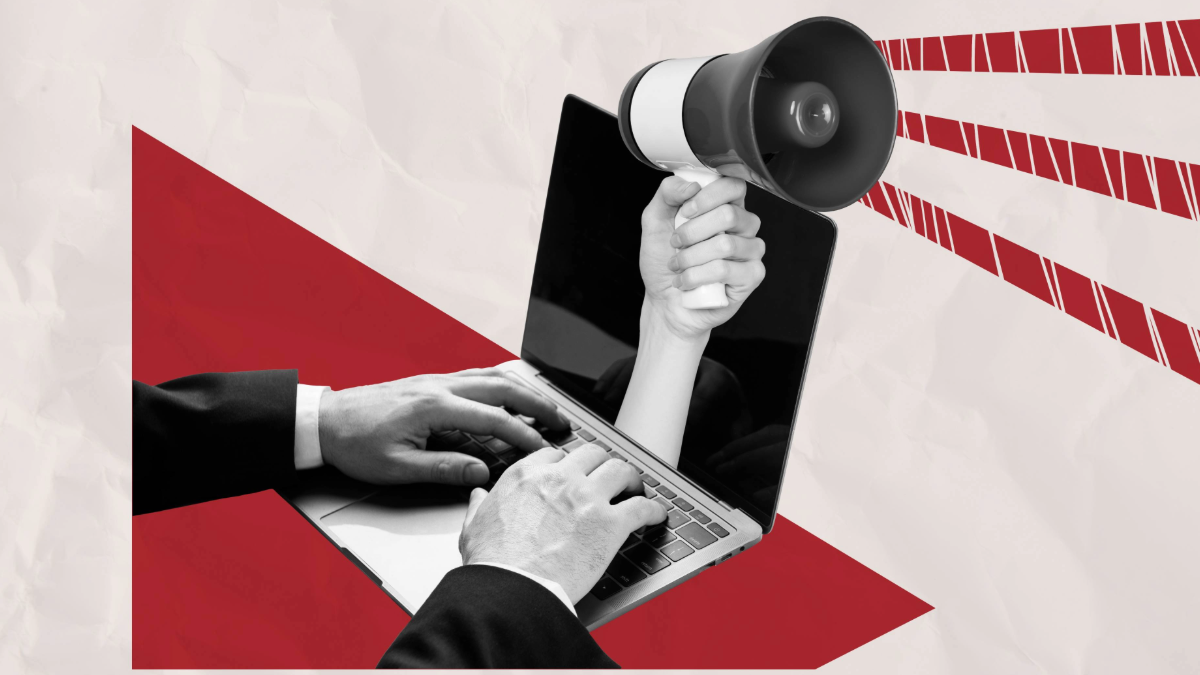What a New Study Reveals About the 'Production-Consumption Gap' on Social Media
Prithvi Iyer / Nov 5, 2025Research into the impact of social media on issues such as information integrity and political polarization has frequently surfaced a pattern: a tiny minority of highly active users produce the vast majority of political content, while most users are passive observers. For instance, previous research on the spread of fake news on Twitter found that a tiny minority of users—supersharers—disproportionately contributed to its spread in the lead-up to the 2020 US election.
A new preprint research paper by social scientists Lisa Oswald, William Small Schulz, Ralph Hertwig, David Lazer, and Sebastian Stier analyzes this “production-consumption gap” and explores how this may lead citizens and scholars alike to “draw incorrect inferences regarding the submerged mass of public opinion.” The phenomenon has important implications, in particular, for the study of the relationship between social media and political polarization and for the design of policy interventions.
The tip of the iceberg
According to the researchers, the “production-consumption gap” has three important consequences:
- Citizens may “develop a distorted perception of public opinion.”
- Researchers may develop a “skewed understanding” of public opinion due to methodological challenges posed by the “production-consumption gap.”
- Because these findings are often shared with the general public, they could “distort the perceptions of non-social-media users, and even the positions taken by legislators and other public policymakers.”.
This problem is heightened when social media data is used to make inferences about political behavior because “the most politically outspoken users represent the proverbial tip of the iceberg: a very visible part of public opinion that may mislead observers as to the contours of the whole object, the variance of opinion distributions, and the majority’s leanings.”

"Predictors and consequences of participation inequality in political discourse on social media identified in the literature." Source
In other words, social media creates a warped picture of what most people think. The iceberg phenomenon suggests that changes in public opinion, like increased polarization, may result from "how people perceive the distribution of opinions in society.”
The authors suggest this may, in fact, be the key to understanding social media’s divisive effects.
Implications for research and public opinion
The researchers say that “the excessive visibility of a highly active minority at the tip of the iceberg can not only mislead social scientists, but also deceive social media users themselves.” Some may argue that the tendency for a small group of users to dominate discourse is not unique to social media. While this may be true, the authors note, digital media provides unique affordances to highly active users, like large online audiences and algorithmic content curation that prioritizes toxic content.
Policymakers often respond to public opinion, but what happens when the public opinion on social media itself is distorted? The authors believe these misperceptions exist at a psychological level. Understanding how these misperceptions form is crucial for research and policy that seeks to hold platforms accountable.
- Social media users often “overperceive the levels of moral outrage expressed in posts,” which may exaggerate feelings of inter-group hostility. Moreover, the authors argue that these distortions may lead people to assume the prevalence of “certain political attitudes”, while discounting the ones held by the “silent majority.”
- These misperceptions about social media can also be reinforced through social learning. As the authors note, “if someone repeatedly encounters messages that suggest a particular political stance is widely accepted, they may begin to adopt that stance themselves, even if it is not actually as common as it appears.”
A key contribution of this paper is its reframing of the potential causes and solutions for online polarization. Researchers have often argued that social media encourages “echo chambers” where users are only exposed to opinions they agree with, and that a solution for that would be to expose people to contrary views. However, evidence from various studies indicate that has not been particularly effective, with some findings suggesting that exposure to opposing views can further entrench a user’s prior beliefs. Instead, the authors propose a different framework that seeks to forge an “alignment between personal and perceived public opinion.”
The authors warn against interpreting this as somehow letting platforms off the hook for their role in exacerbating online polarization, arguing that the “hyper-visibility of extreme political views,” which are consequences of algorithmic design, “may be the core problem with digital media and politics.”
Recommendations and future research
Given the prevalence of this “iceberg” phenomenon, the authors proposed recommendations for future research to help go beyond the so-called tip of the iceberg.
- Rethinking intervention design: The researchers argue that it is crucial to place the “production–consumption gap at the core of intervention design.” This should include educating participants that “social media creates perceptual distortions that translate into inaccurate mental representations of public opinion.” One practical way to do this is to provide social media users with information about passive behavior, like view counts, in addition to share counts.
- Open substantive research questions: The authors contend that the “iceberg” phenomenon leaves several key empirical questions that need further investigation. For instance, why do some users remain passive on social media? Furthermore, previous research has consistently shown that social media companies use content-ranking algorithms that prioritize engagement. However, engaging content “may not be particularly representative of the views of the broader user population.” Thus, future research should consider “interventions to ensure a more balanced representation of voices, mitigating the polarization effect.”
Conclusion
The iceberg metaphor employed by the authors aptly describes the “production-consumption gap” prevalent in social media discourse. The authors show that if the gap is left unaddressed by those studying platforms, it may lead to misleading inferences about the role of social media in society and limit the effectiveness of interventions designed to address phenomena such as polarization.
Authors

